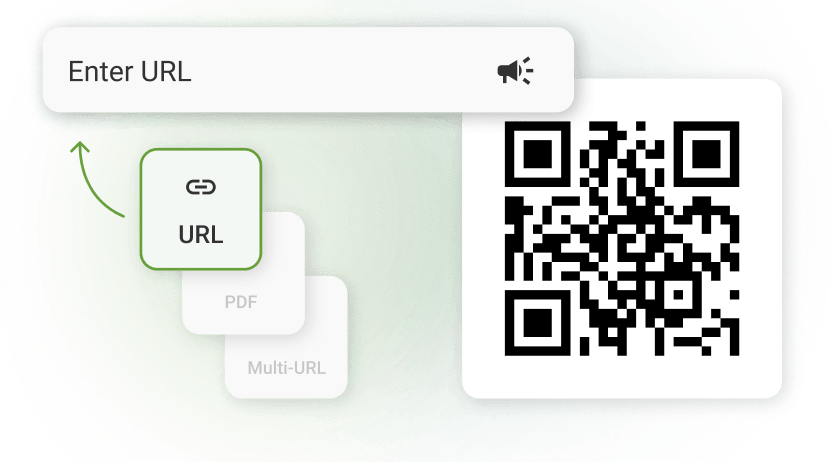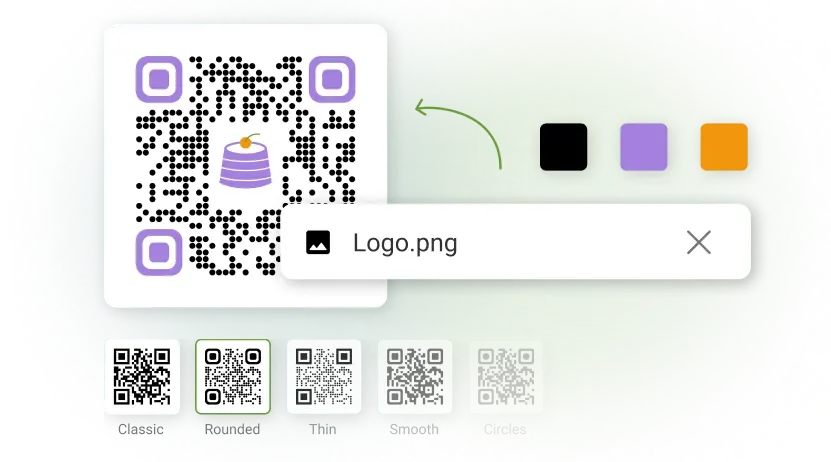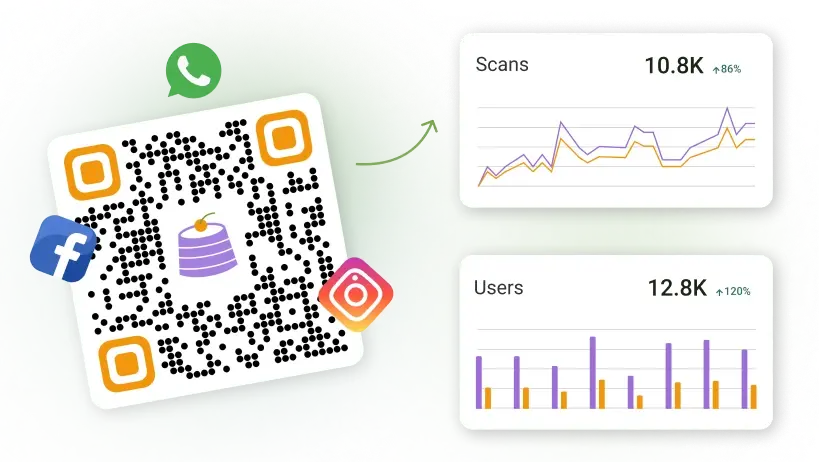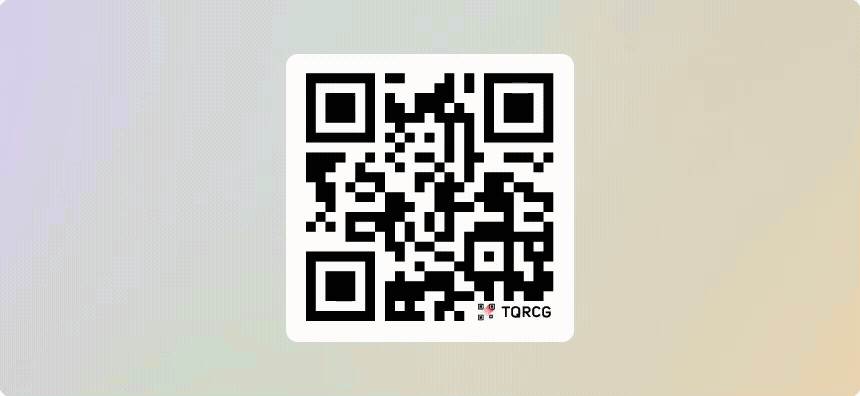QR Code Usage has skyrocketed in the past few years. Users are not just scanning QR Codes, they’re using it smartly to get the most out of them. In 2024, user-generated dynamic QR codes were scanned 6,825,842 times. That’s a 433% increase compared to 2021.
The growing use of dynamic QR Codes points to the fact that people are using one QR Code with multiple links to avoid redundancy of data, tracking information, and an overall better experience.
But can you create multi-URL QR Codes for free while adding your brand customizations? What are the benefits and limitations of such codes? Let’s explore.
What is a multi-link QR Code?
QR codes with multiple links, often called multi-link, multi-URL, or smart QR Codes are dynamic QR Codes that allow a single code to direct users to several different destinations. Upon scanning multi-link QR Codes, users land on a page with a bunch of URLs for a brand’s website, social media accounts, or other important links.
Why are multi-URL QR Codes gaining popularity?
Multi-URL QR Codes give brands and businesses the freedom to make QR Codes more organized. One QR code replaces the need for multiple codes, decluttering print and digital materials, and making campaigns look cleaner and more professional.
Since multi-link QR Codes are dynamic in nature, it allows you to change or update the linked URLs without reprinting the code, making them ideal for evolving campaigns and seasonal promotions. You can also track scans, user locations, devices, and which links are clicked, providing valuable insights for optimizing marketing strategies.
How does a multi-link QR Code work?
There are two ways how multi-link QR Codes can work. You can either direct the user to a landing page with a menu of link options, relevant to your business, to choose from. Alternatively, you can direct them to a particular link based on factors such as device type, location, time, etc.
1. Multi-link menu QR Code
This type directs users to a landing page that displays a menu of multiple links. The user can then choose the most relevant option. For example, a restaurant’s QR code opens a page with links to their menu, reservation system, delivery platforms, and social media.
2. Conditional redirect QR Code
This type uses smart rules to automatically send users to a specific link based on certain conditions, like:
- Device type (iOS vs. Android)
- Location (e.g., country-specific sites)
- Time/date (e.g., different offers by day)
- Language settings
Remember: You can create a multi-URL QR Code only with a dynamic QR Code generator. Popular options include The QR Code Generator and Uniqode.
How to create a QR Code with multiple links
Here are the steps to create a QR Code with multiple links or URLs:
Step 1: Go to The QR Code Generator and select the Multi-URL options on the dashboard. As you need to create a dynamic QR Code, click on ‘Sign up free’. You’ll get a 14-day free trial with all the premium features.
Step 2: After signing up, you’ll have access to the premium dashboard. Here, you’ll be able to customize the webpage that’ll show up with the links when the QR Code is scanned.
Step 3: Edit the title to show on the landing page and add the links you want to link the QR Code to. For adding links, you need to enter details like Link Title and URL.

Step 4: On this step, you need to start adding the links and titles of the different URLs you want to link your QR Code to. Examples include, your website, blog site, social media page, contact page, order page, etc. Once you’re done adding all the links, click on ‘Next’ on the right side of the page.

Step 5: On the next page, you’ll be able to customize the multi-URL QR Code as per your brand preferences. For example, you can add your logo, adjust square colors and QR Code size. You can also select different QR Code patterns and styles.

Step 6: After customizing your QR Code, click on ‘Save’ and select the image format (PNG or SVG) and image size. Rename your QR Code and then click on ‘Download’.

When you scan the QR Code on your phone, you’ll be redirected to a page similar to this:

You’ll also be able to track scan data like number of scans, users, location, devices, time, country, etc. All this information will be available on the ‘Analytics’ tab on the dashboard.

What are the benefits of using a multi-URL QR Code?
Here are some benefits of using a multi-URL QR Code:
1. Easily updatable and flexible: You can add, edit, or remove links at any time without needing to reprint or redistribute the QR code, making them ideal for dynamic campaigns and error correction.
2. Improved user experience: Users can quickly find the information or service they need, increasing satisfaction and engagement.
3. Cost and space efficient: Reduces the need for multiple printed codes, saving space on packaging, posters, and business cards, and lowering printing costs.
4. Enhanced analytics and tracking: Multi-link QR codes allow you to track scan data such as location, time, device, and which links are most popular. This provides valuable insights for optimizing marketing strategies and understanding customer behavior.
5 applications of multi-link QR Codes
If you’re interested in implementing multi-link QR codes for your business or personal use, here are some examples for inspiration:
1. Marketing and promotion
Several fashion brands like Levi’s, Zara, and Ralph Lauren use multi-link QR Codes in clothing labels, in-store posters, and promotional materials. These QR codes direct customers to a variety of digital content, such as seasonal collections, ongoing sales, product details, brand stories, and social media pages.
2. Social media for influencers and creators
Influencers and creators often face limitations on platforms like Instagram, which traditionally allowed only one link in the bio. To overcome this, creators and influencers can make use of multi-URL QR Codes on their pictures and videos to redirect their audience to their latest YouTube videos, TikTok profiles, merchandise stores, collaboration partners, and newsletter sign-ups.
3. Product packaging
International e-commerce brands use multi-link QR codes on product packaging and thank-you cards to direct customers to a landing page with multiple options (e.g., language, product categories, discounts, reviews, social media).
4. Digital portfolios
Artists can showcase their work with a curated landing page featuring links to their Behance portfolio, Instagram gallery, YouTube tutorials, affiliate product recommendations, and commission booking forms.
5. Customer service for restaurants
Restaurants use multi-link QR codes on table tents and receipts to improve customer engagement. Diners scanning the code can view digital menus, make reservations, access special offers, leave reviews, or follow the restaurant on social media.
Frequently asked questions
You’ll need to use a multi-link or dynamic QR code generator to create a QR code that holds multiple links. The process is simple: you choose a platform that allows multi-link landing pages (like The QR Code Generator), add all the URLs you want (e.g., social media, website, store), and customize your landing page.
Static QR codes are fixed; once generated, the data embedded in them (such as a URL) cannot be changed. They’re free and simple but limited. Dynamic QR codes, on the other hand, store a short URL that redirects users to your actual content, which means you can edit the destination URL anytime, even after printing the QR code.
Creating QR Codes with multiple links does not cost you anything. You can generate them for free using platforms like The QR Code Generator, which offers 2 lifetime free dynamic QR Codes.










 No credit card required
No credit card required